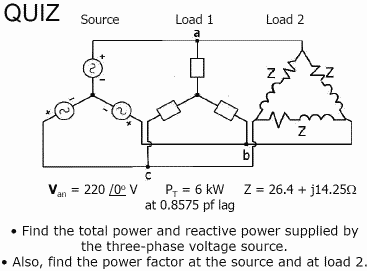Community Tip - Did you know you can set a signature that will be added to all your posts? Set it here! X
- Subscribe to RSS Feed
- Mark Topic as New
- Mark Topic as Read
- Float this Topic for Current User
- Bookmark
- Subscribe
- Mute
- Printer Friendly Page
polar transformation
- Mark as New
- Bookmark
- Subscribe
- Mute
- Subscribe to RSS Feed
- Permalink
- Notify Moderator
polar transformation
hi guys,
new to mathcad (trial license ver15.0)
Is there a way to convert a complex function to its polar form easily?
Say, a+bi >> sqrt(a^2+b^2) angle: atan(b/a)
Also, is there an easy way to find and assign a variable the conjugate of the complex function (without having to retype all the way)
attached is a simple problem (err solution) which i made.
notice that i have to rewrite just to get the conjugate..
and i can't outrightly transform it to phasor..
thanks..
Solved! Go to Solution.
- Labels:
-
Other
Accepted Solutions
- Mark as New
- Bookmark
- Subscribe
- Mute
- Subscribe to RSS Feed
- Permalink
- Notify Moderator
Is there a way to convert a complex function to its polar form easily?
Say, a+bi >> sqrt(a^2+b^2) angle: atan(b/a)
Also, is there an easy way to find and assign a variable the conjugate of the complex function (without having to retype all the way)
attached is a simple problem (err solution) which i made.
notice that i have to rewrite just to get the conjugate..
and i can't outrightly transform it to phasor..
thanks..
Yes. Go to Help and search for the word 'polar'. From the results, select the page 'functions for complex numbers'; this describes the arg function and modulus function. Then goto the linked Quicksheet "Complex Numbers: Polar Notation". This gives examples of their use and gives a pair of (user-defined) functions that handle transformation between the polar and rectangular forms.
You can get the complex conjugate by using the built-in conjugate operator (key stroke " in M13).
As an aside, it is generally better to post a worksheet rather than a pdf file - save somebody the effort of typing in what they see and 'print outs' can mask subtle errors, such as implicit multiplication or incorrect choice of index type (ie, index v literal). Ideally, post the worksheet in the version you use and the earliest version Mathcad will let you save as (the latter gives you a much wider audience as Mathcad worksheet format s are not generally backward compatible), eg Mathcad 11 will not read Mathcad 13 xmcd files).
- Mark as New
- Bookmark
- Subscribe
- Mute
- Subscribe to RSS Feed
- Permalink
- Notify Moderator
Is there a way to convert a complex function to its polar form easily?
Say, a+bi >> sqrt(a^2+b^2) angle: atan(b/a)
Also, is there an easy way to find and assign a variable the conjugate of the complex function (without having to retype all the way)
attached is a simple problem (err solution) which i made.
notice that i have to rewrite just to get the conjugate..
and i can't outrightly transform it to phasor..
thanks..
Yes. Go to Help and search for the word 'polar'. From the results, select the page 'functions for complex numbers'; this describes the arg function and modulus function. Then goto the linked Quicksheet "Complex Numbers: Polar Notation". This gives examples of their use and gives a pair of (user-defined) functions that handle transformation between the polar and rectangular forms.
You can get the complex conjugate by using the built-in conjugate operator (key stroke " in M13).
As an aside, it is generally better to post a worksheet rather than a pdf file - save somebody the effort of typing in what they see and 'print outs' can mask subtle errors, such as implicit multiplication or incorrect choice of index type (ie, index v literal). Ideally, post the worksheet in the version you use and the earliest version Mathcad will let you save as (the latter gives you a much wider audience as Mathcad worksheet format s are not generally backward compatible), eg Mathcad 11 will not read Mathcad 13 xmcd files).
- Mark as New
- Bookmark
- Subscribe
- Mute
- Subscribe to RSS Feed
- Permalink
- Notify Moderator
Check first your formulas and attach a work sheet with a circuit diagram.
jmG
- Mark as New
- Bookmark
- Subscribe
- Mute
- Subscribe to RSS Feed
- Permalink
- Notify Moderator
sorry for the late reply..
attached are the problem and the mathcad file..
- Mark as New
- Bookmark
- Subscribe
- Mute
- Subscribe to RSS Feed
- Permalink
- Notify Moderator
Sorry, no collab does homework, use your book.
Comments:
1. Why enlarge a scanned image from book ?
2. The quiz is that there is no answer because there is no question.
Alternating sources have no polarity.

Can't you parallel the resistive load and the inductive loads ?
Maybe not because the resistive load is just heating the birds on the line.
Invent some resistive load and work by the examples in the book.
If cos f is 0.8575 and not the same as cos f Z, can you conclude the
resistive load ? Can you check if pf 0.8575 is cos f for Z.
Can't open your Mathcad version. [jmG]
jmG


